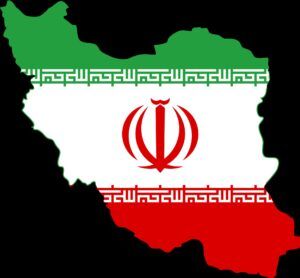Introduction
The Islamic Republic of Iran is a theocratic, constitutional republic in which Shia Muslims clergy, as well as political leaders, vetted by the clergy  dominate the most crucial power structure. The legitimacy of the Iranian Government depends on the twin pillars of the popular sovereignty and the rule of the supreme leaders of the Islamic Revolution. This research paper considers the related policies of the Islamic Republic of Iran, using the framework for the comparative political analysis. A wide range of interrelated dimensions of the political system is also considered by this structure and even the variables that are directly or indirectly defining it. In this paper on the Islamic Republic of Iran, it analyzes the origin, strength and the scope of Iranian Government, the attempts to categorize the political regime if Iran and also define its dominant features, describe the political institutions of Iran and points out the conditions that are responsible for the establishment. It also examines the causes for the weakness of the Iranian political parties, placing Iran into a broad scope of International Politics.
dominate the most crucial power structure. The legitimacy of the Iranian Government depends on the twin pillars of the popular sovereignty and the rule of the supreme leaders of the Islamic Revolution. This research paper considers the related policies of the Islamic Republic of Iran, using the framework for the comparative political analysis. A wide range of interrelated dimensions of the political system is also considered by this structure and even the variables that are directly or indirectly defining it. In this paper on the Islamic Republic of Iran, it analyzes the origin, strength and the scope of Iranian Government, the attempts to categorize the political regime if Iran and also define its dominant features, describe the political institutions of Iran and points out the conditions that are responsible for the establishment. It also examines the causes for the weakness of the Iranian political parties, placing Iran into a broad scope of International Politics.
Authoritarian, totalitarian and democratic tendencies coexist within the Iranian regime and have its adherents, especially at every level of the country’s organization. In the course of this research, I will attempt to conclude whether that combination of the features of various regime type found in Iran of the authoritarian model the most. Furthermore, between the factions of political networks, an equilibrium seems to have emerged in Iran, which lead to the opening of the public sphere of debate and discussion. Therefore, it remains to be observed if the equilibrium result to the emergence of a conclusion on the mechanisms is used when formulating policy and the establishment of sturdy legal culture to the entire rule of law that can guarantee stability, and predictability of the public life and of course, render the implementation of governmental policies and decisions.
The Paradox of Islamic Nation-State
The modern Iranian Government, with a nationally centralized administration and army, started back in the 1920s. The Iranian Islamic Revolution, which was experienced back in 1978 to 1979 paradoxically contributed to the firm roots of the Iranian Nation-State. What the paradox of the Iranian Nation-State stems from the fact that the global unit of solidarity is the supranational Islamic community of faith, in accordance with the Islamic thinking, the umma, and hence the territorial national-state is not compatible with the higher unity. Furthermore, alongside the global solidarity, there is the more immediate solidarity of communities depending on tribe, region or sect, which is also not compatible with the nation-state. Therefore, the country gave a religious legitimacy to it at the expense of transnational solidarity. According to the constitution of Iran, the supreme leader, who is the guide or faqih, is not necessarily supposed to be Iranian though the body, which has the responsibilities of electing the Guard, is made of Iranian citizens, who are elected by the public. Because the Revolution emerged from a dual legitimacy, political and religious, it resulted in Iranization and politicization of the supranational Shi’ism (Roy, 1999).
Iran is governed by a written constitution, which was drafted after wide-ranging debates by an elected Assembly of Experts, the parliament (Majlis), and the elected president. It was then ratified by a referendum, back on December 2-3, 1979. The contradictory duality of this sovereignty is outlined in the constitution of the Islamic Republic of Iran, which included the independence of the popular will, alongside with the democratic nation-state constitutions as well as the novel principle in the Government and politics (Velayat-e faqih). This places the entire judicial system under the exclusive control of the clergy, which has undergone provisions of the extensive revision of the legal codes, in order to render them Islamic (Zubaida, 1988).
The Strengths of Iran State/Government
Similar to the majority of the states in the world, the Islamic Republic of Iran has a unitary system with the authority and power concentrated to the central government. Iranian Government displays both the weaknesses and strengths. First, the state has managed to fulfill its core functions of offering order, security, and law in the cases of political instability and continued violence as well as the uncertainty on the borders of Iran. The safety of Iran is threatened by the Taliban resurgence in Afghanistan to the east and the insurgencies in Iraq, west of Iran. On the other hand, the existence of authoritarian, totalitarian, and also the democratic features in the Iran’s political system. They prevented the full emergence of a conclusion on the mechanism that should be used in formulating policy and the development of a strong legal culture that was conducive to the rule of law, without which the public life unpredictability renders the implementation of the governmental decision as well as policies uncertain.